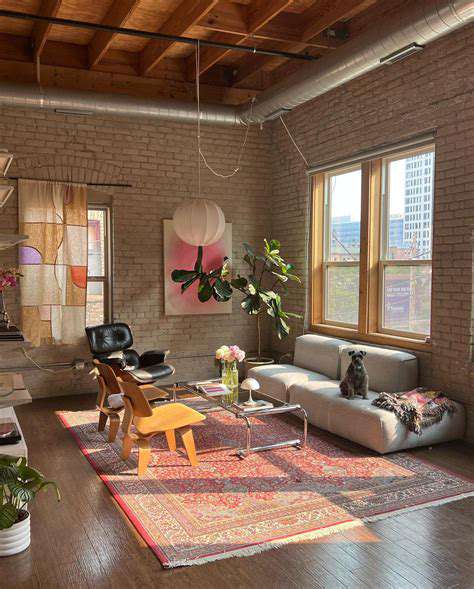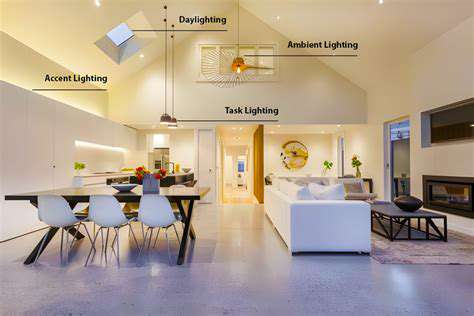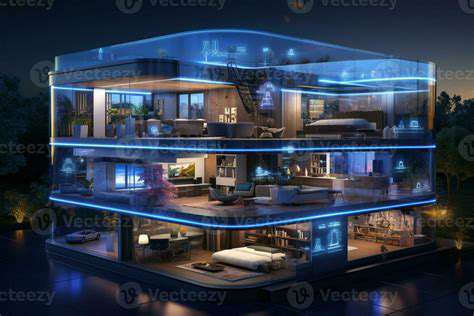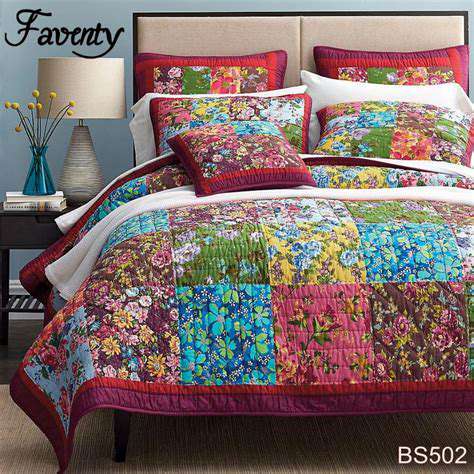Modern Bedroom Design Tips for Improving Sleep Quality and Ambiance
Strategic Color Palette Selection
Color psychology plays a pivotal role in bedroom design. Soft, desaturated tones like dusty blue or pale taupe lower physiological arousal. These hues subtly slow heart rate and breathing, priming the body for rest. Reserve vibrant colors for small accents—a single throw pillow or framed artwork provides personality without overstimulation.
Consider the 60-30-10 rule: 60% dominant calming color, 30% secondary tone, and 10% accent shade. This balanced approach creates visual harmony while allowing for personal expression through carefully curated pops of color.
Maximizing Space and Functionality
Thoughtful furniture arrangement enhances both aesthetics and utility. Allow at least 24 inches of clearance around the bed for easy movement. Multi-functional pieces like storage ottomans or lofted beds with built-in drawers optimize small spaces brilliantly. Vertical storage solutions—tall bookcases or wall-mounted shelves—keep essentials accessible without consuming precious floor space.
Create distinct zones within the bedroom: a sleeping area, dressing space, and perhaps a small reading nook. Area rugs can define these zones visually while adding textural warmth underfoot.
Incorporating Natural Light and Ventilation
Fresh air circulation and daylight exposure are non-negotiable for healthy sleep environments. Open windows daily—even in winter—to refresh indoor air quality. Consider installing trickle vents if full window opening isn't practical. Position beds to benefit from morning sunlight when possible, helping regulate natural wake cycles.
For rooms with limited windows, full-spectrum light bulbs can mimic daylight's benefits. Pair these with air-purifying plants like snake plants or peace lilies to enhance both air quality and visual appeal.
Smart Furniture Choices for a Modern Aesthetic
Contemporary design favors clean lines and purposeful pieces. Platform beds with integrated lighting or charging stations marry form with function. Choose furniture proportional to your space—oversized pieces overwhelm small rooms, while petite furnishings get lost in spacious areas.
Floating nightstands conserve floor space, while mirrored surfaces amplify light. For ultimate versatility, consider modular furniture systems that adapt as your needs evolve over time.
Elevating the Atmosphere with Textiles and Decor
Choosing the Right Fabrics
Fabric selection transforms bedroom ambiance from functional to luxurious. Layer natural fibers for seasonal adaptability—linen for summer, flannel for winter, with year-round cotton as your foundation. Velvet accents on throw pillows or headboards add tactile richness without overwhelming the senses.
Consider fabric performance: wrinkle-resistant blends simplify maintenance, while blackout lining for curtains enhances sleep quality. The interplay between matte and lustrous textures creates depth—pair nubby wool throws with smooth satin pillowcases for sophisticated contrast.
Color Palette and Mood
Monochromatic schemes promote tranquility through tonal harmony. Varying shades of a single color create cohesion without monotony—think slate blue walls with navy bedding and pale blue-gray accents. For warmer palettes, blend cream, camel, and soft terracotta for earthy elegance.
Introduce color gradually—begin with neutral foundations, then layer in accent hues through easily changeable elements like decorative pillows or artwork. This approach allows seasonal refreshes without complete redecorating.
Incorporating Lighting
Three-tiered lighting design ensures both functionality and ambiance. Overhead fixtures should provide adjustable general illumination—track lighting or semi-flush mounts work well. Bedside task lighting requires careful positioning—the bottom of lampshades should sit at eye level when seated in bed.
Accent lighting adds drama: LED strip lights under beds create floating effects, while picture lights highlight artwork. Smart bulbs that adjust color temperature automatically align with natural circadian rhythms throughout the day.
Strategic Placement of Decor
Apply the rule of three for balanced decor groupings—three varying-height objects create visually pleasing arrangements. Negative space is equally important—allow breathing room around decorative elements to prevent visual clutter.
Rotate decor seasonally to maintain freshness—lighter textiles and floral prints in spring, richer tones and textured layers in autumn. This practice keeps the space feeling dynamic without requiring major investments.
Layering Textiles for Comfort
Build bedding layers for both comfort and style. Start with quality mattress protection, then add: 1. Fitted sheet (400+ thread count for durability)2. Flat sheet (optional for hot sleepers)3. Lightweight blanket4. Seasonal duvet or quiltThis system allows easy adjustment for temperature fluctuations throughout the night.
Statement Pieces to Enhance Style
Invest in one or two high-impact elements rather than numerous small decorations. A sculptural chandelier or handcrafted headboard becomes an instant focal point. For renters or budget-conscious decorators, removable wallpaper accent walls or oversized artwork create similar impact without permanent changes.
When selecting statement pieces, consider both daytime and nighttime appearance. Materials that catch light beautifully—crystal, metallic finishes, or iridescent surfaces—add dimension that evolves throughout the day.











